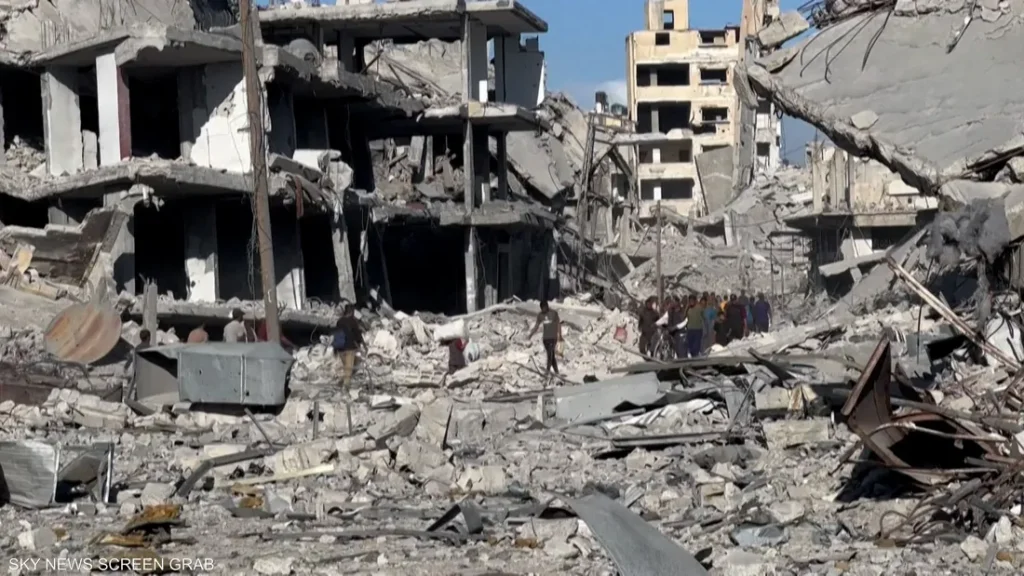Gaza ceasefire agreement has officially come into effect amid uncertainty over how it will be implemented on the ground.
The Israeli army announced a repositioning of its forces inside the Gaza Strip, while Hamas declared it would deploy security units in areas vacated by Israeli troops.
This situation raises questions over whether what is happening truly reflects the terms of the agreement or marks the start of a risky transitional phase.
Did the Airstrikes Stopped After Gaza Ceasefire Agreement?
In the early hours of the truce, Israeli forces began withdrawing from several residential areas in Gaza City and the northern part of the Strip toward what has been called the “temporary security line” or the “yellow line”, which are references to the Trump peace plan.
However, Palestinian sources reported airstrikes and artillery shelling on Khan Younis and parts of Gaza even after the ceasefire took effect, highlighting the fragility of the field implementation.
Will Hamas Govern Gaza After the Ceasefire?
Meanwhile, Hamas officials confirmed that their security personnel had started deploying in the areas vacated by Israeli troops.
Analysts interpret this as a sign that Hamas remains the only armed authority on the ground, regardless of whether these forces are described as “security units” or “fighters.”
Read also: Now and After 2 Years: How Gaza Ceasefire Was Born – Why it is a Fragile Peace
The Day After Gaza Ceasefire Agreement
Experts believe Gaza has now entered a transitional phase.
This period is between the end of the war and the uncertain “day after.”
Key issues such as prisoner exchanges, troop withdrawals, and disarmament of Hamas are expected to be tested in this phase, with outcomes largely depending on regional mediation and international guarantees.
Netanyahu Still Insists on Disarming Hamas
Israeli leaders have said that the army will remain on high alert and withdraw only to agreed security lines, reserving the right to resume operations if conditions are not met.
Prime Minister Benjamin Netanyahu stated that the continuation of the truce depends on achieving “the goals of the war” and “disarming Hamas.”
On the other hand, Hamas insists that it has received firm international and U.S. assurances that the war is over.
What May Turn the Success of Ceasefire to Failure?
Still, tensions persist amid disputes over the prisoner lists and Israeli threats to renew military action if the next phase of the deal stalls.
Ultimately, what is unfolding in Gaza appears to be a phased Israeli withdrawal and a gradual Hamas redeployment.
The success of the ceasefire depends on how faithfully both parties adhere to the agreement’s terms — and whether fragile calm can prevail over renewed confrontation.


